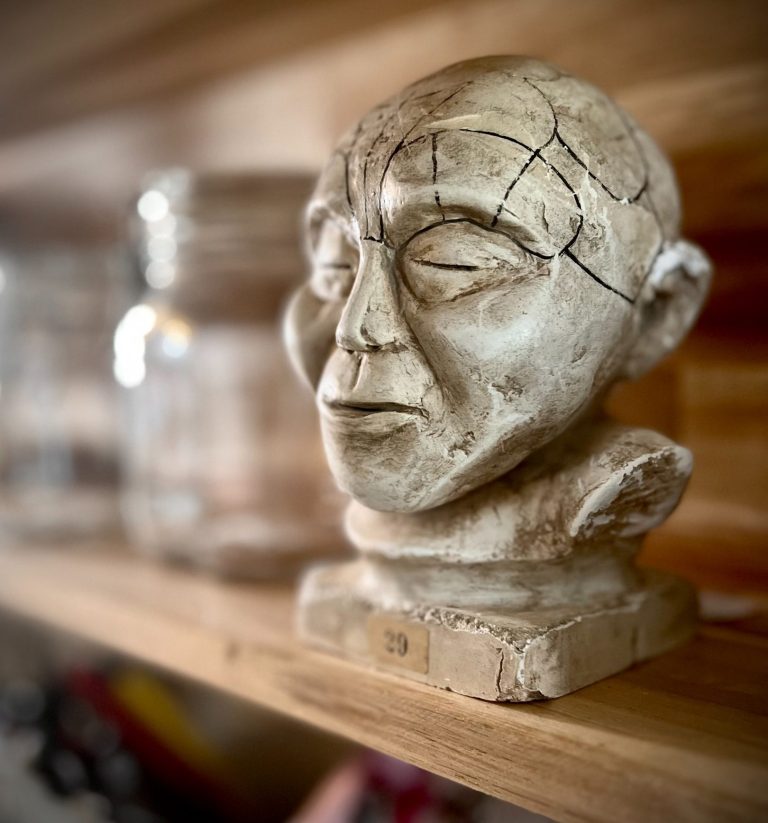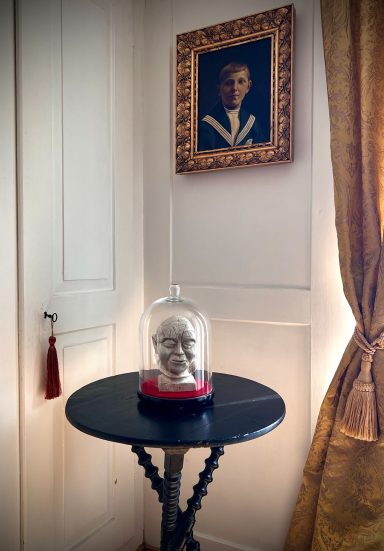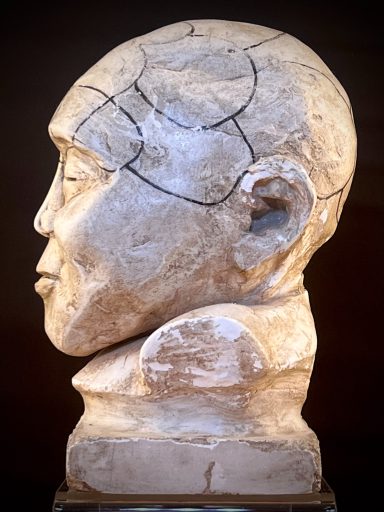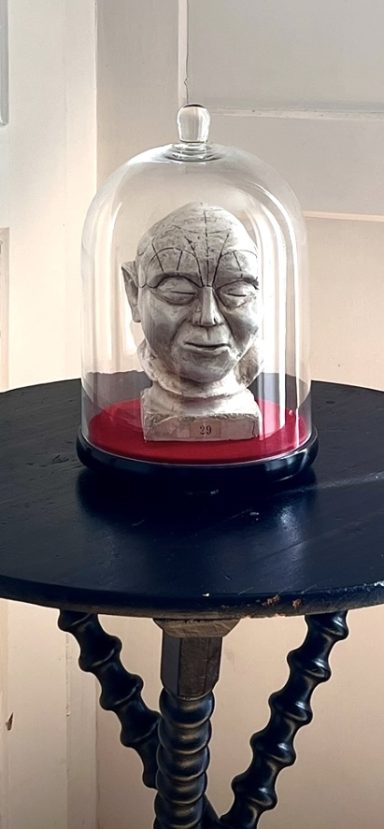Late 19th c. phrenology plaster head with cranial divisions
CHF 320
A rare and expressive late 19th-century plaster bust, crafted in line with the now-discredited but historically fascinating pseudoscience of phrenology. The head features incised regional divisions mapped to mental traits, consistent with 19th-century academic models. This particular example shows mild cranial deformities and is numbered “29” — likely indicating it was part of a teaching series or institutional collection used in psychological or anatomical study.
Phrenology was developed by Viennese physician Franz Joseph Gall in the late 18th century and was originally called "Schädellehre" – literally "the doctrine of the skull." The theory proposed that bumps and shapes on the skull reflected inner character and intellect. While now considered a pseudoscience, it contributed to early ideas about brain localization and remains a fascinating chapter in the history of medicine.
The bust shows age-related wear and sits under a later-added glass dome with an ebonised wooden base — ready to be admired as a medical oddity, historical talking point, or simply a brilliantly bizarre decorative object.
You rarely see one like this on the market — expressive, numbered, and display-ready.
Origin: Sourced in France, origin unknown
Artist / Attribution: Unknown
Year / Period: Late 19th century (bust); 20th century (glass dome and base)
Materials: Plaster, pigment, glass dome, wood base
Features:
Cranial divisions etched according to phrenological theory
Distinctively shaped head with stylised features
Later-added display dome with ebonised wooden base
Historically tied to the now-disproven theory of “Schädellehre”
Marks / Signatures: None
Condition: Plaster bust shows wear and minor damage consistent with age. Glass dome and base are in very good condition.
Measurements:
Bust: approx. 17 cm tall, base 9 × 9 cm
Dome incl. base: approx. 25 cm high, 19 cm diameter










